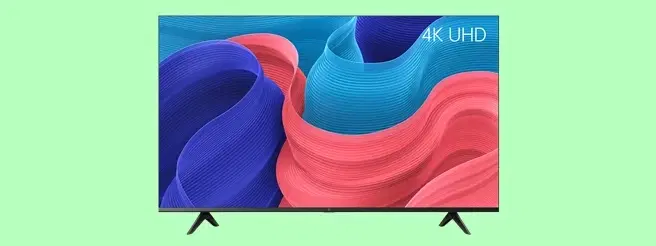
Consumer Electronics
•05 min read

Buy SAMSUNG ViewFinity S6 68.47 cm (27 inch) QHD IPS Panel Height Adjustable Monitor with In-built Speakers online at best prices from Croma. Check product details, reviews & more. Shop now!
When choosing a device, the screen is often one of the most critical factors in determining user experience. In today’s fast-paced world, two dominant display technologies, IPS display and AMOLED, have emerged as popular choices in devices such as smartphones, tablets, monitors, and TVs. By understanding the nuances of each, you can decide which technology best suits your needs for work, leisure, or professional tasks.
IPS, which stands for In-Plane Switching, is a type of LCD technology that has become well-known for its impressive viewing angles and accurate color reproduction. Originally developed to overcome the limitations of conventional LCD screens, IPS displays ensure that images remain consistent even when viewed off-centre. They offer reliable performance for activities that demand precise colour work, such as photo editing and graphic design, and are favoured in environments that require collaborative and shared screen experiences.
AMOLED, or Active Matrix Organic Light Emitting Diode, builds upon OLED technology by using self-emissive pixels. This means each pixel produces its own light, which allows for deeper blacks and higher contrast ratios. The technology enables the creation of thinner and more flexible screens, making it an attractive option for high-end devices like premium smartphones and TVs, where vibrancy and immersive viewing experiences are a priority.
When comparing the two, IPS displays stand out for their accurate colour reproduction and excellent viewing angles, creating consistent and reliable images across a range of lighting conditions. On the other hand, AMOLED displays are renowned for their vibrant colours and true black levels, which enhance visual contrast and make multimedia content pop on screen.
Both IPS and AMOLED provide unique strengths when it comes to brightness and viewing angles. IPS displays are known to maintain colour accuracy across wide viewing angles, which is ideal for shared viewing experiences. AMOLED screens, while offering exceptional contrast ratios, perform exceptionally well in controlled lighting, delivering vibrant visuals that excel under various conditions. However, in bright sunlight, it is always advisable to check the availability of express delivery if you’re considering an upgrade on platforms that offer same-day service.
For those seeking deep blacks, AMOLED technology is a clear leader, thanks to its self-emissive pixels that can completely switch off in dark areas. This results in true blacks and impressive contrast ratios. In contrast, IPS displays rely on backlighting, which can sometimes limit their ability to achieve absolute black hues, making them less effective for high-contrast scenarios.
IPS displays are highly valued for their exceptional colour accuracy, which makes them ideal for professionals who require precise image representation. Their wide viewing angles benefit group presentations and family movie nights alike. Additionally, IPS technology is known for its durability and lower risk of screen burn-in, ensuring longevity for long-term use.
AMOLED displays offer standout performance with vibrant colours, superior contrast ratios, and the ability to achieve true black levels. The self-emissive nature of AMOLED means it can display dark content more efficiently, often leading to better energy efficiency when handling darker themes. Their slim and flexible design also opens up a multitude of innovative product design opportunities.
While IPS displays provide great performance for everyday use, they can fall short when it comes to delivering the deep blacks and vibrant imagery that are characteristic of AMOLED displays. Conversely, AMOLED screens, despite their stunning visual output, are sometimes prone to screen burn-in over prolonged periods of static content display. Additionally, the manufacturing process for AMOLED can lead to higher production costs.
One key metric to consider is power consumption. AMOLED displays have an edge when it comes to showing darker content because each pixel emits its own light and can be turned off individually, reducing energy usage. IPS displays, while reliable and consistent, typically maintain constant power consumption regardless of the content being displayed.
Durability is another vital factor. IPS displays tend to offer robust longevity and are less affected by the risk of screen burn-in. AMOLED displays, while visually attractive, require careful usage to maintain their longevity, given the potential vulnerability to burn-in with prolonged use. Over time, both technologies have evolved to minimise ageing issues, but individual device usage scenarios often determine which option will perform better in the long run.
When it comes to eye comfort during long periods of use, both display technologies have their merits. IPS displays emit a consistent level of blue light, which some users might find less stimulating. Meanwhile, AMOLED displays may offer improved eye comfort when showing darker content, thanks to reduced blue light emissions. For prolonged screen time, understanding these differences can help you choose a display that better suits your personal health needs.
For gaming enthusiasts and avid multimedia consumers, the decision can be particularly challenging. AMOLED displays provide a highly immersive experience with vivid colours and high contrast, ideal for those seeking a cinematic feel during gaming sessions. Conversely, IPS displays often deliver smooth, consistent visuals with excellent responsiveness, a crucial factor for competitive gaming and professional work where precision matters.
Professionals demanding meticulous colour accuracy, such as graphic designers and photo editors, might lean towards IPS displays. Their consistent performance and less flashy output ensure that colours remain true to life, even in collaborative settings. On the other hand, creative industries that thrive on bold, high-impact visuals may prefer the striking characteristics of AMOLED displays, recognising that vibrant imagery can dramatically enhance the viewer’s engagement.
Insight Corner: Did You Know Why AMOLED Displays Are So Vibrant?
AMOLED displays achieve their vibrant colours by using organic compounds that emit light directly, eliminating the need for a backlight. This technology enables deeper blacks and higher contrast ratios, making them ideal for immersive viewing experiences.
It depends on your needs. IPS is better for colour accuracy and durability, while AMOLED offers vibrant colours and true blacks.
AMOLED may be easier on the eyes due to reduced blue light emissions when displaying darker content. However, IPS displays are also deemed safe for prolonged use.
Yes, IPS displays are excellent for professional work requiring colour accuracy and wide viewing angles.
IPS is generally considered better for long-term use due to a reduced risk of screen burn-in, whereas OLED, including AMOLED, can be beneficial in darker viewing scenarios.
IPS relies on a backlight and is known for accurate colour reproduction, whereas AMOLED uses self-emissive pixels to deliver vibrant colours and deep blacks.
Both IPS and AMOLED display technologies have their distinct strengths and potential drawbacks. IPS excels with its superior colour accuracy, excellent viewing angles and robust durability, making it a preferred choice for professional settings. In contrast, AMOLED offers vibrant, immersive visuals with truly deep blacks that enhance multimedia experiences. Understanding these differences helps you make a more informed decision when choosing a device that complements your lifestyle and specific needs. Alongside benefits like NeuCoins rewards for loyalty, platforms like Tata Neu ensure that every shopping experience is seamless, convenient and rewarding.